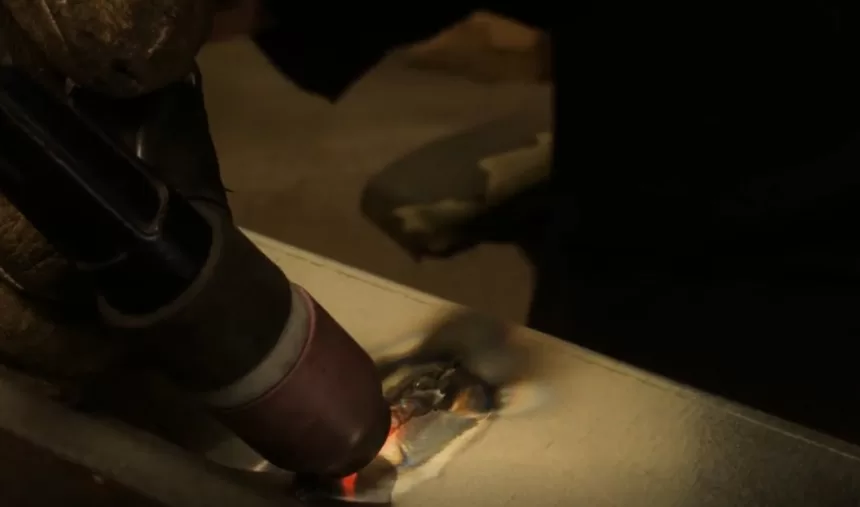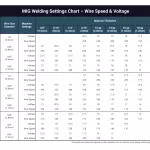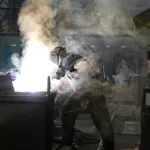Aluminum is a unique metal that offers many advantages. Those advantages make it an excellent choice for many projects. Therefore, it’s not uncommon to perform TIG welding on aluminum.
Tig Welding Aluminum Explained
Welding Town
In this article, you will find information about every aspect of TIG welds on aluminum. This guide contains extremely valuable information for anyone who starts this kind of weld on aluminum for the first time, from current settings to weldability with other materials. Let’s get started.
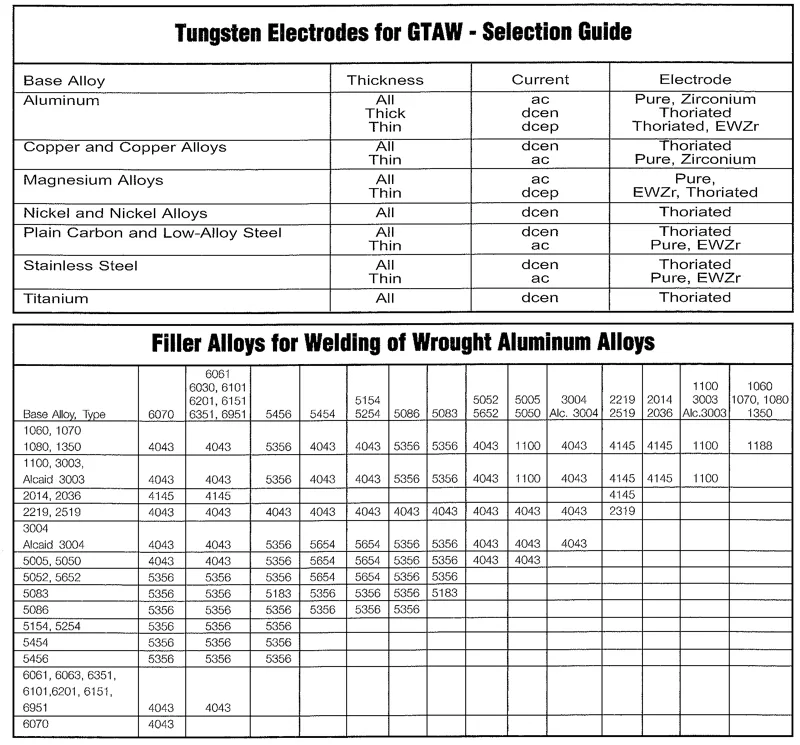
Basics of TIG Welding
Before examining this process on aluminum welds, I will write a small intro to TIG welding basics. If you are already familiar with this method, you can scroll down to the actual techniques and recommendations that I am providing. If not, then it’s a good idea to read a few lines because they will help you understand everything I am about to mention.
This method is also known as tungsten arc gas welding, and it is the fabrication process. It is where two pieces of metal are merged into one piece. The main parts that you will need are non-consumable tungsten electrodes, inert gas shielding, filler material, and a machine that supplies the required current.
TIG is an excellent method for joining different metallic materials. Apart from steel, TIG is widely used for welding non-ferrous metals like copper, magnesium, and aluminum.
What Parameters Are Important in TIG Welding?
Apart from the welder’s technique, many factors affect the process. Some of them are related to your equipment, while others have to do with the materials involved in the weld. Anyway, when it comes to the basics, you must be aware of the following.
- Shielding gas: Welders worldwide perform 90% of the applications with the help of pure Argon. Stainless steel, aluminum, and carbon steel can be easily welded with this type of gas. Also, you might have heard of gas mixtures being used in TIG welding. Helium and argon mixtures create a hotter arc.
- Properties of the electrode: The application requirements affect the size of the electrode. Depending on the amperage and thickness of the metal, specific electrode sizes perform better than others. Also, in some projects, it is better to use electrodes containing other materials apart from tungsten.
- Gas flow: Adequate gas flow for most TIG welding operations ranges from 20 to 30 cubic feet per hour. If you choose a large cup size, then it might require more flow.
- Current settings: Current settings are an essential part of any weld. There are tons of machines available online that offer advanced settings ideal for someone who wants to learn quickly or perform welds frequently. Whether your machine offers those unique features or not, two parameters are still vital. I am talking about amperage and polarity. Those two are your primary concern.
- Additional parameters: Let’s examine some other factors that could play a role. Other vital factors are joint type, material thickness, welding position, and base material.
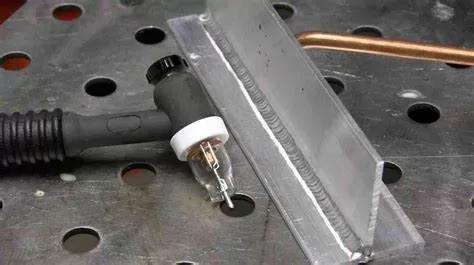
Applications of TIG Welding with Aluminum
You might be wondering, where welders TIG weld on aluminum. Well, it’s a widespread technique, and you will find many applications in the industry. A common one is to weld thin wall tubes or pipes with a small diameter. So, there is extended use of the method in the bicycle industry.
Many welders use it on:
- Bicycle frames
- Cylinder heads
- Engine blocks
- Injector bungs
- Rims
- Radiator
- Intake manifolds
You can weld on aluminum foil with the use of an arc or spot weld. Laser welding is also a good option; they can tune the power for thin aluminum foils as well as micromachining.
You can weld on Aluminum cans using a 1/16″ tungsten electrode on your Dynasty 200. You can use MIG wire as a filler and then start at 20 amps. The trick to not blowing a hole in the can is to begin the arc on the filler wire. When you get a puddle formed, bump your amps to 25 and begin running beads around, switching the can between welds.
Selecting Electrode and Filler Metal for TIG Welds on Aluminum
As you will probably know, in TIG welding, a rod made out of tungsten is used as the electrode. Tungsten has a high melting temperature, and it doesn’t become liquid during the process. However, not all electrodes are made out of pure tungsten because, in some cases, you want special conditions inside the weld pool. Remember that few tungsten molecules get inside the weld pool due to electromagnetic phenomena (not melting). So, in unique processes, like welds on aluminum, everything matters.
Choosing the correct electrode that could be used for the right type of material and thickness can be difficult. Let’s examine how each electrode type affects welding on aluminum.
The types of tungsten electrodes are the following ones.
- Thoriated
- Zircooniated
- Pure Tungsten
- Created
Let’s examine how these electrodes help in creating perfect welds on aluminum. I will review them one by one.
Pure Tungsten: This type of electrode is ideal for application with AC and not ideal for DC. This is 99.5 percent tungsten and provides them the capability to ball or round with ease. This is ideal for low to medium amperages with aluminum and magnesium alloys. So, pure tungsten is the perfect electrode for experienced welders when it comes to aluminum welds.
Rare Earth: This is the latest type of tungsten and has different additives like hybrid combinations of oxides. This is used for DC current and isn’t perfect for AC. However, These electrodes are a good recommendation for amateurs on TIG aluminum welds.
Zirconiated, White: This consists of 99.1 percent pure tungsten and 0.15-0.4 zirconium in the form of oxides. This kind of electrode is used in place of pure tungsten as they have the ability to keep the balled tips and resist contamination. I highly recommend these electrodes for amateurs on TIG aluminum welds.
Thoriated: This type of tungsten has 97.3 percent pure tungsten and 2 percent thorium oxide that has low radioactivity. This is utilized for DC welding of steels as well as other types of materials. It’s a terrible choice for aluminum.
Created: This is best to use in alternating current or direct current applications with the use of inverter-based constant current power sources. The erosion rate is low, and they are ideal at a low amperage range. It’s another good option to use on your TIG aluminum welds.
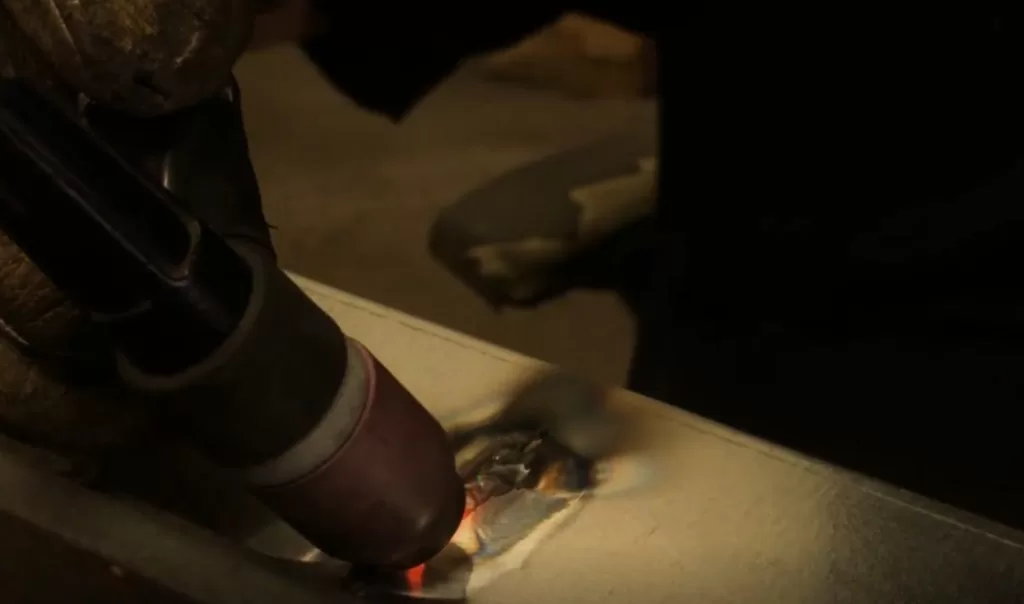
What Polarity Should I Use
Polarity in TIG welding is simple as a concept, but determining the right settings can be tricky. That’s because the arc is completely different in different polarity settings. Considering that welding conditions are critical on aluminum, you can easily understand that optimal settings can make your life a lot easier.
Like in any other arc welding type, an electric current creates the arc. The kind of current significantly affects the procedure. The two major types of current are DC and AC. Each type is better in different welding projects.
If you are wondering what the difference between AC and DC is, here is a short explanation. In DC, the electrons move continuously in a specific direction while at the same time, in an electric arc, positively charged particles move in the opposite direction. Depending on the direction which the electrons are moving, DC can be placed in one of two subcategories called DCEN and DCEP. In DCEN, the negative pole is the electrode, while in DCEP, the negative pole is the base metal.
Now in AC, the flow of the electrons keeps switching directions at a precise frequency. Obviously, the positively charged particles move in the opposite direction of the electrons. Therefore, two opposite oscillations happen simultaneously—the polarity in each circle varies from DC negative to DC positive.
AC or DC on Aluminum
Let’s get to the vital part of figuring out which current type is better for TIG welds in aluminum. Magnesium and aluminum are the two most common metals that welders use as an AC output. It’s different from stainless steel and steel in general and DC output usually is the better choice. So, for most aluminum alloys and welding positions, AC is the current type that I suggest.
DCEN vs DCEP
DCEP or Reverse Polarity is the standard polarity for Stick welding and MIG welding. In MIG, if it utilizes gas, without metalcore or flux, it will need electrode positive. Metalcore and dual shield can vary. DCEP offers a more stable arc in general in stick welding. On the other hand, for welds that need light penetration, utilize DCEN if the electrode is designated to run either polarity.
Frequency Suggestions for AC
As I have mentioned earlier, in most TIG projects involving aluminum, AC offers more advantages than DC. A primary characteristic of AC is that it fluctuates between DCEN and DCEP. The polarity changes many times each second.
Since it is a periodic phenomenon, the number that describes how many of those full cycles happen in each second is called frequency. Frequency is counted in Hertz, which is the reciprocal of a second. Enough with the maths. Let’s see how this relates to welding.
In some TIG machines, the user can determine the frequency of that current. Nowadays, you don’t need to have an expensive machine that offers advanced settings. For example, in 50 Hz, 50 complete circles take place within each second. In each period, the polarity changes twice. Therefore, in such frequency, the polarity changes 100 times each second.
High and Low Frequencies in TIG Welding on Aluminum
As you might have guessed, frequency affects weld pool properties. In most TIG machines, you can use a current between 20 to 250 Hz. Also, the arc starts with the use of high-frequency and high-voltage settings. In many welders, there is a button for enabling this feature
High welding frequency offers a more focused arc cone with improved directional control as well as a narrower weld bead and cleaning areas. High frequency helps a lot in welding in corners, fillet welds, root passes, lap even T-joints. On the other hand, low frequency generates a wider arc cone that broadens the weld bead profile and better eliminates impurities from the metal surface. Also, it transfers the utmost amount of energy to the workpiece and speeds up applications needed for extended metal deposition.
What Amperage Should You Use for TIG Welding on Aluminum
One of the most critical aspects of arc welding, in general, is the amount of current that you are using. You have probably heard of this metric as amperage. Amperage describes the amount of current that passes through the wire and arc. This number is significant when you TIG weld Aluminum. The amount of electric current can be counted with Amperes.
You might be wondering how amperage affects TIG welding on aluminum. Like in most welding processes, amperage mainly affects penetration. When it comes to penetration, TIG is a great method because a welder can create an arc with a stable amount of current.
In TIG aluminum, amperage is controlled with a foot pedal or fingertip control. However, it is best to set the right maximum amperage to obtain the best results. For a 1/1ch inch aluminum, the amperage required is between 60 to 90 amps. In case you have 1/8 inch aluminum, you need 125 to 160 amps. On the other hand, 190 to 240 amps are required for 3/16 inch aluminum, while ¼ inch aluminum needs 260 to 340 amps and 330 to 400 amps are needed for 3/8 inch aluminum.
The rule of thumb for TIG aluminum is to use 1 Ampere for every thousandth of material thickness. Meaning, welding a base material that is 12.5mm or 1/8 thick would need 125 amps. Once the material has a thickness of over ¼ inch, the rule of thumb starts to deviate, and not as much amp is needed.
Suggested Voltage
The amount of voltage strongly correlates with the amount of heat the arc produces. It means when the arc voltage is high, more power goes into the parts. If you were going to ask what the right voltage for TIG is welding on aluminum, the answer is that it depends.
Usually, you need a bit more than 60 Volts to start the arc and a high frequency. If you are using a lot of current you can’t also use high voltage. Depending on the amount of current that you use, there is a maximum amount of voltage. Therefore, the safest option is to start at a low to medium voltage and calibrate accordingly.
What Gas Should You Use
An essential part of TIG welding is shielding gas. Without shielding gas, the welding pool would be contaminated by the surrounding air. I have seen people using all kinds of gases and mixtures in TIG welding. The selection of those gases more frequently than you think is not optimal or even downright wrong.
Having the right gas can help you in a couple of ways. It can either make your life easier by helping you control the arc or add useful properties to the weld pool itself.
The gases that are mostly used in TIG welding are Argon, Helium, and carbon dioxide. I am not suggesting all of the above. Also, you might encounter mixtures. Let’s see which of those gases are suitable for aluminum.
Is Argon a Good Option
When it comes to TIG welding with aluminum, Argon is probably the best choice that you might make. For most aluminum alloys, you won’t have any problems with this type of gas. It’s a heavy inert gas that allows you to create strong welds. It’s a much cheaper option than Helium, and the seam’s properties will be excellent once it cools off.
So, I advise you to use these pure argon canisters in case you TIG weld aluminum. You will save a lot of time by using this gas.
Is Helium a Good Option
Yes. Helium is one of the best choices for TIG welding on aluminum. Simply because it will provide good arc stability as well as an improved cleaning action. If I had to use between 100% Helium and 100% Argon, then I would choose Argon. However, Helium is cheaper in the United States, and many welders like to use it.
Are Argon – Helium Mixtures Any Good
Such mixtures provide better arc starting features when you GTAW aluminum. Gas mixtures, typically 75 percent Argon and 25 percent helium, are sometimes utilized and can increase travel speeds in gas tungsten arc welding. I would rather use such a mix instead of pure Helium. You can make your custom gas mixes with this regulator. Depending on your needs, you can increase the percentage of some of those gases. In every mixture, the arc changes, so you can find the mix that fits your needs.
Is Carbon Dioxide on Aluminum Any Good
Carbon dioxide like oxygen reacts with the Aluminum creating oxides. So using either of those gases will create weaker welds in aluminum. So, I would not recommend using CO2 on aluminum welds.
How to TIG Weld Aluminum – Step by Step
An essential part of any welding procedure is preparation. If you are planning for TIG welding, then you must concerned about cleaning and different methods are available for it like,
- Hand pads
- Wire brushes
- Pickling paste
People are showing interest in using hand pads, but it is definitely not the quickest method. Another method for more problematic contaminants is using wire brushes. Both of these methods will work in most cases. You can also take advantage of the pickling paste.
Steps for TIG Welds on Aluminum
Preparation of the materials before welding is very vital to do rightly. There are reasons why you need to clean the raw aluminum material.
Aluminum materials naturally develop an oxide layer on its exterior surface while it’s cooling off at the factory
Cleaning Contaminants and Oils on the Surface
Cleaning the aluminum surface before starting your TIG weld can be done in two vital steps such as:
1: Eliminate the contaminants and oils from the aluminum surface. It’s essential to do this step prior to brushing. Brushing can push contaminants into the aluminum.
2: Brush the material’s surface to eliminate aluminum oxides. Usually, this oxide layer is not hard to eliminate from the aluminum’s surface with a brush. Make sure to use a stainless steel brush.
Tip: Mark the different brushes with Aluminum, Stainless, and Steel, so you do not get different brushes mixed up. Of course, you do not want to accidentally utilize a brush that you always utilize on carbon steel on aluminum material.
Machine Preparation
Ensure the welding machine is set to the desired settings. As I have mentioned earlier, alternating current is the best option on aluminum welds. Suppose you are one of those welders who like using a pedal; you can set your machine to more current than you need to have. So, by adjusting the amps with a pedal, you can use exactly as much current as you want at any time. Here is a machine that comes with a foot pedal.
The TIG electrode must be pure tungsten because of better purity and durability. The electrode must not be sharpened to a pointed point since the rough exchanging current could cause the breaking off of the electrode tip and fall into the weld. The shielding gas must be pure argon gas for utmost weld purity as well as performance while welding aluminum.
The Process
Make sure to prepare a checklist. This must include the following items:
- Ensure there’s nothing around the workpiece, that can catch fire
- Set the amperage
- Make sure the current is set to A/C or Alternating Current.
- Check the machine for the right amount of coolant.
- Tighten the connection on the hose and TIG torch cable
- Check the electrode to ensure that it is a proper condition and has the right stick-out level.
- Open the shielding gas bottle’s valve.
- Set the shielding gas regulator to the right amount of flow
- Switch on and adjust the auto-darkening welding helmet
- Wear PPE
- Weld without allowing the electrode to touch the base metal or weld pool.
Important Tip: Since there are a lot of instances to keep in mind prior to starting the weld, it might be useful to make your list on paper and then attach it to the top of the welder, so you are able to reference it effortlessly.
PPE or Personal Protective Equipment
Make sure that your PPE is in place and working properly. Since safety is vital in the field, always ensure the PPE is working before beginning the weld. PPE essential for TIG welding includes:
- Safety glasses
- Hearing protection
- Steel toe boots
- Automatic darkening welding helmet
- Leathers and flame retardant coat
- Welding gloves
- Flame-retardant headwear
Even if the above are all vital to utilize while welding, for TIG welding aluminum, you can choose to concentrate firstly on these items:
How to TIG Welding On Aluminum Pipe is Done
Aluminum Pipe TIG welding is typical in an array of industries, which are seeing significant job growth. It requires technique and proper execution. Here are the tips on how to TIG weld aluminum pipe.
When you are welding around an aluminum pipe for a root pass, there might be instances when it’s likely to walk the cup. This needs a steady hand as you move the electrode and utilize the TIG cup to give extra stability. This also gives you a clean and uniform weld.
The backward and forward motions are efficient when you are walking the cup with the electrode for a root pass on an aluminum pipe as it will give deeper penetration into the metal. Forward motion will assist the filler metal to go deeper into the weld joint. The backward motion, on the other hand, will offer extra heat to assist in settling in.
While you can distort the metal once you run the TIG welder extremely hot, don’t be scared to run the welder hot enough to break down the edges of the workpiece to get strong fusion with aluminum.
Running too cold will lead to weak weld, so you need to learn how to weld with lots of heat without harming the materials.
If you are already working at hot amperage for the root pass, use the same settings for the hot pass. Avoid cranking it too hot, or you will have a mess on your hands.
If you add your extra passes along the aluminum pipe, you can weave the welds in like any other weld joint. You can utilize a series of cursive or a type of side-to-side arc.
What’s the Heat Input of TIG Welding on Aluminum?
TIG welding is done on aluminum plates that normally serve as the component material in structural uses such as chemical and cryogenics processing industries. The formation of the porosity and the solidification cracking are the renowned defects when TIG welding alloy, which is very responsive to the welding heat input. The heat input has diverged from 0.89 kJ/mm to 5 kJ/mm made by the amalgamation of welding torch travel speed as well as welding current. Usually, 1-1.2 KJ//mm is a sufficient heat input.
TIG welders work in powerful heat and require protection, but touch sensitivity is critical. Therefore a fair amount of dexterity is needed. Power heat can be avoided with the use of TIG fingers as well as a good pair of gloves. There are lots of welding gloves to choose from, so make sure to get a high-quality one.
TIG Welding Aluminum Machines
One of the best choices for welding aluminum is a TIG welder that runs on AC power, and you will get many of the most excellent prices. The best TIG welding aluminum machines should provide clean starts, smooth arcs, as well as user-friendly settings, and relatively more essential features. Here is a short overview of the best TIG welding aluminum machines available on the market today:
- Lotos TIG/Stick Welder: This welding machine offers features that are needed for most TIG or stick welding uses or TIG non-contact arc initiation. It provides consistent arc starts as well as greater reliability as opposed to conventional HF arc starters. This is easy to install and boosts productivity. The automatic line power management systems enable input voltage hookup without linking it manually, offering convenience in the job setting. This is a perfect solution for unreliable or dirty power.
- Forney Easy TIG Welder: This is perfect for home use. It’s one of the most reliable machines for their price.
- Lincoln 210: This is a multi-process welder ideal for the educator, small contractor as well and educator who likes to carry out MIG welding. It comes with push-and-turn digital controls as well as a color display screen for fast and easy operation.
- Miller Multimatic 215: This is a user-friendly and versatile MIG, TIG, and stick welder, which assists in building skills. It comes with a color screen that features the auto-set elite. This is your all-in-one welder that connects to 120 to 240-volt input power and is able to weld up to 3/8 mild steel.
TIG Weldability Between Aluminum And Bronze Alloy
Aluminum and its alloys are renowned metals because of their good corrosion resistance, low weight, and weldability. Even if they have low strength, some alloys can have mechanical properties the same as steel. A wide array of techniques can merge bronze alloys. Therefore, it is essential to know the properties of bronze alloys.
The high thermal conductivity of aluminum and the fast solidifying weld pools make its alloys specifically prone to profile imperfections. To combat the risk of an undercut, inconsistency, and insufficient penetration or fusion, make sure to use the right technique and parameters for the weld.
One useful technique is to place the metal forehand. Keep in mind that aluminum bronze rod provides suitable wear-resistance surfaces once deposited on cast iron, steel, copper, and other metals.
TIG Weldability Between Aluminum And Steel
Aluminum allows it to be lighter than steels, with a density of approximately 2.70 g/cm3 instead of a range of 7.75 to 8.05 g/cm3 for steels. So, this means that a comparable steel volume is about three times heavier than aluminum.
While aluminum can be attached to other metals with ease through mechanical fastening or adhesive bonding, special methods are needed if it is to be arc welded to other types of metals like steel. An extremely brittle intermetallic compound is formed once metals like copper, steel, titanium, or magnesium are arc-welded straight to aluminum. To keep the brittle compounds away, some vital techniques have been made to isolate other metals from softening aluminum during the process of arc welding. Bimetallic transition inserts are your best shot for connecting aluminum with steel.
The idea behind the use of bimetallic compounds is to interpolate a metal between aluminum and steel that bridges the gap between those two metals. Therefore, the weld will be separated into two different ones. The first one is between aluminum and the transition metal. The second one is between the transition metal and steel. Also, you can coat the steel piece with silver or aluminum solder and arc weld it with aluminum. None of the described methods are ideal and more complex methods are required like explosion welding.
TIG Weldability Between Aluminum And Titanium
A technique for making welds between aluminum and titanium is to melt an aluminum alloy or aluminum filler that sticks to both metals at the joint boundary. Both metals will soften with the use of enough welding energy.
However, keep in mind that when it comes to temperature, there is an upper limit of 2000 degrees Celsius. Also, there is a maximum amount of titanium percentage inside the aluminum filler. In many cases, you don’t need more than 10 percent titanium. Lastly, you can expect a discontinuous phase between both metals.
Conclusion
I hope this guide helped you enough to start welding on aluminum today. Also, check out other articles about welding and CNC machining because you will find complete guides similar to this one.




![12 Different Types of Welding Processes [The Definitive Guide] 6 12 Different Types of Welding Processes [The Definitive Guide]](https://www.021208.com/wp-content/uploads/2025/01/12-Different-Types-of-Welding-Processes-The-Definitive-Guide-150x150.jpg)


